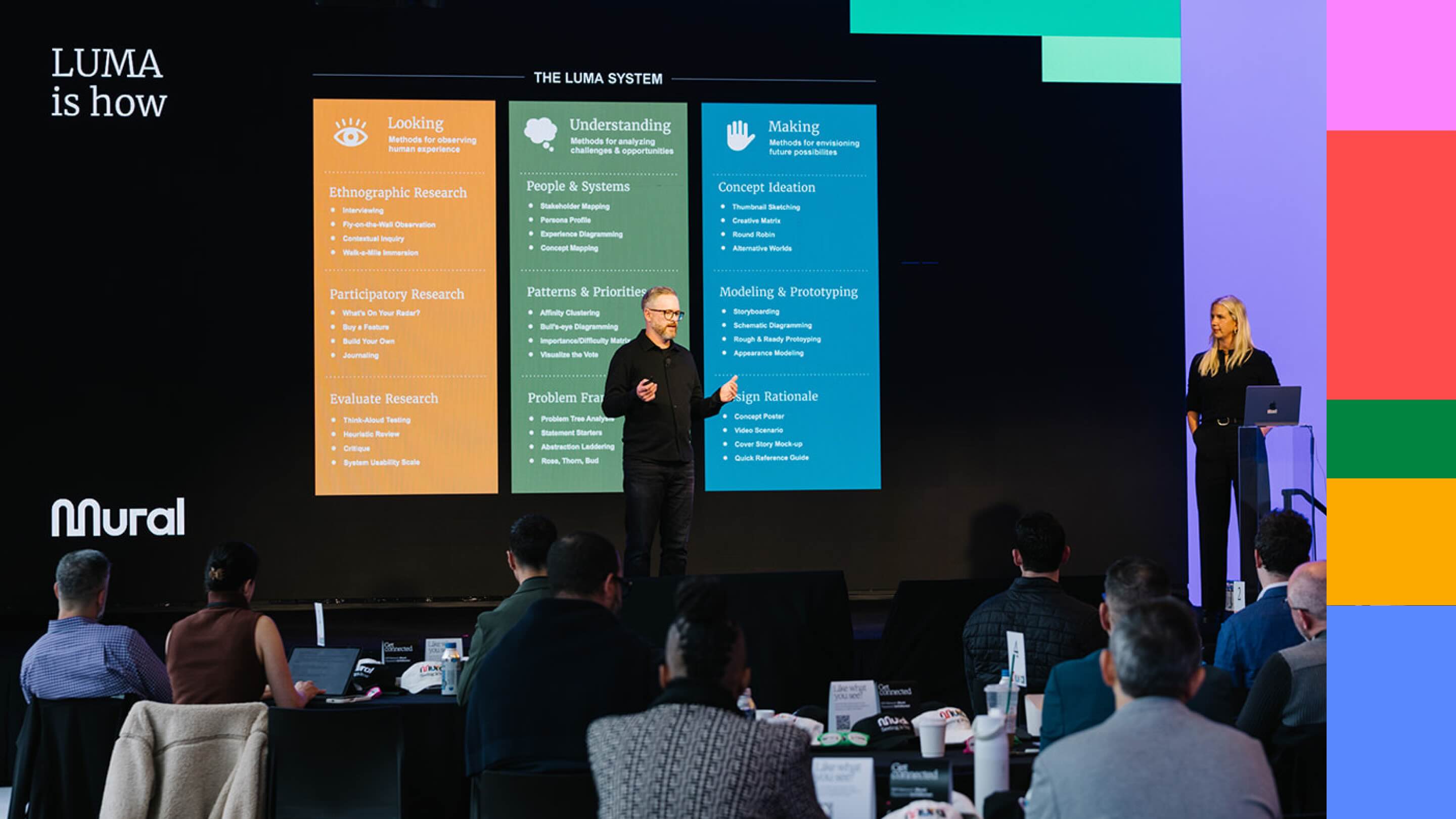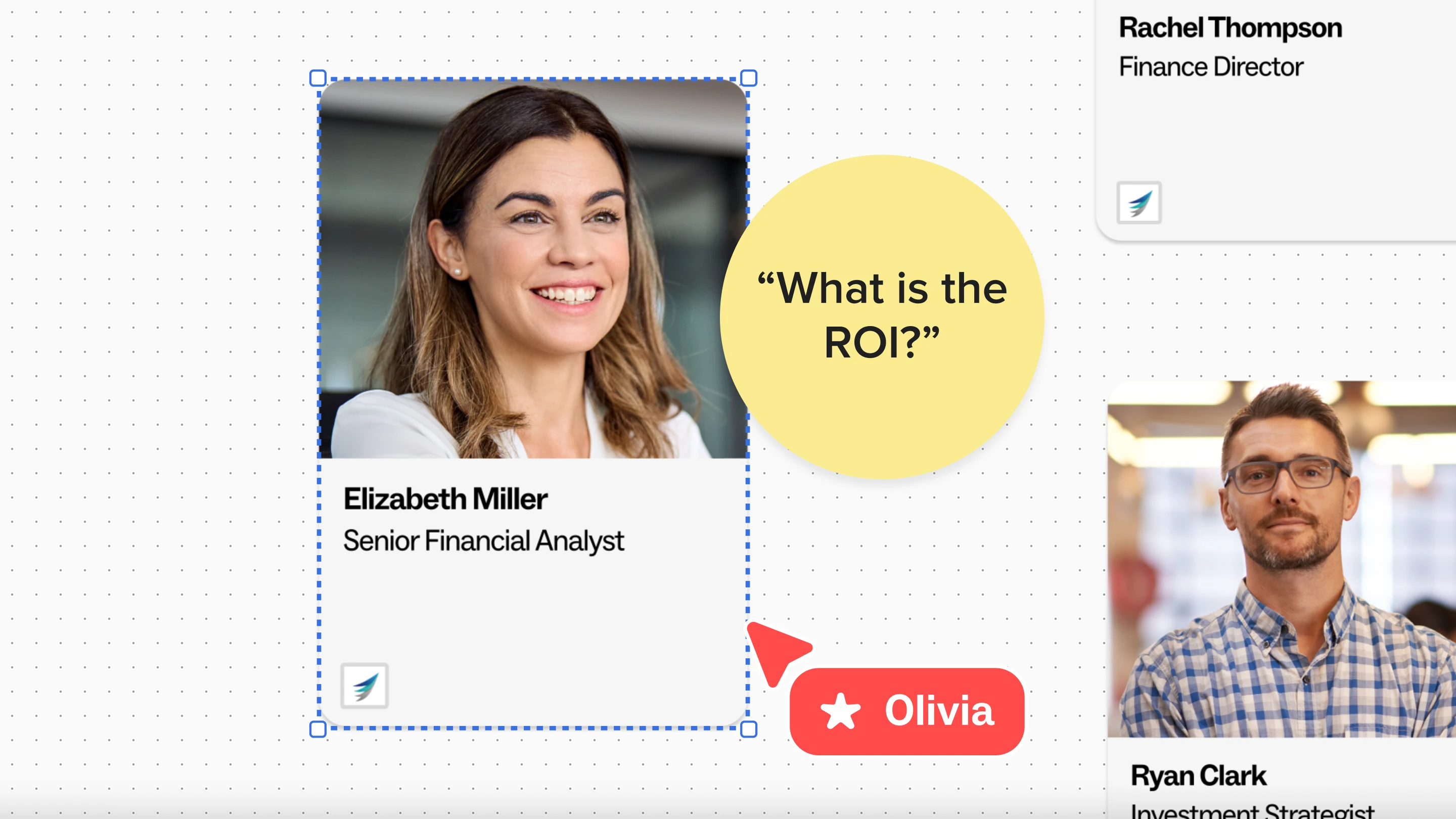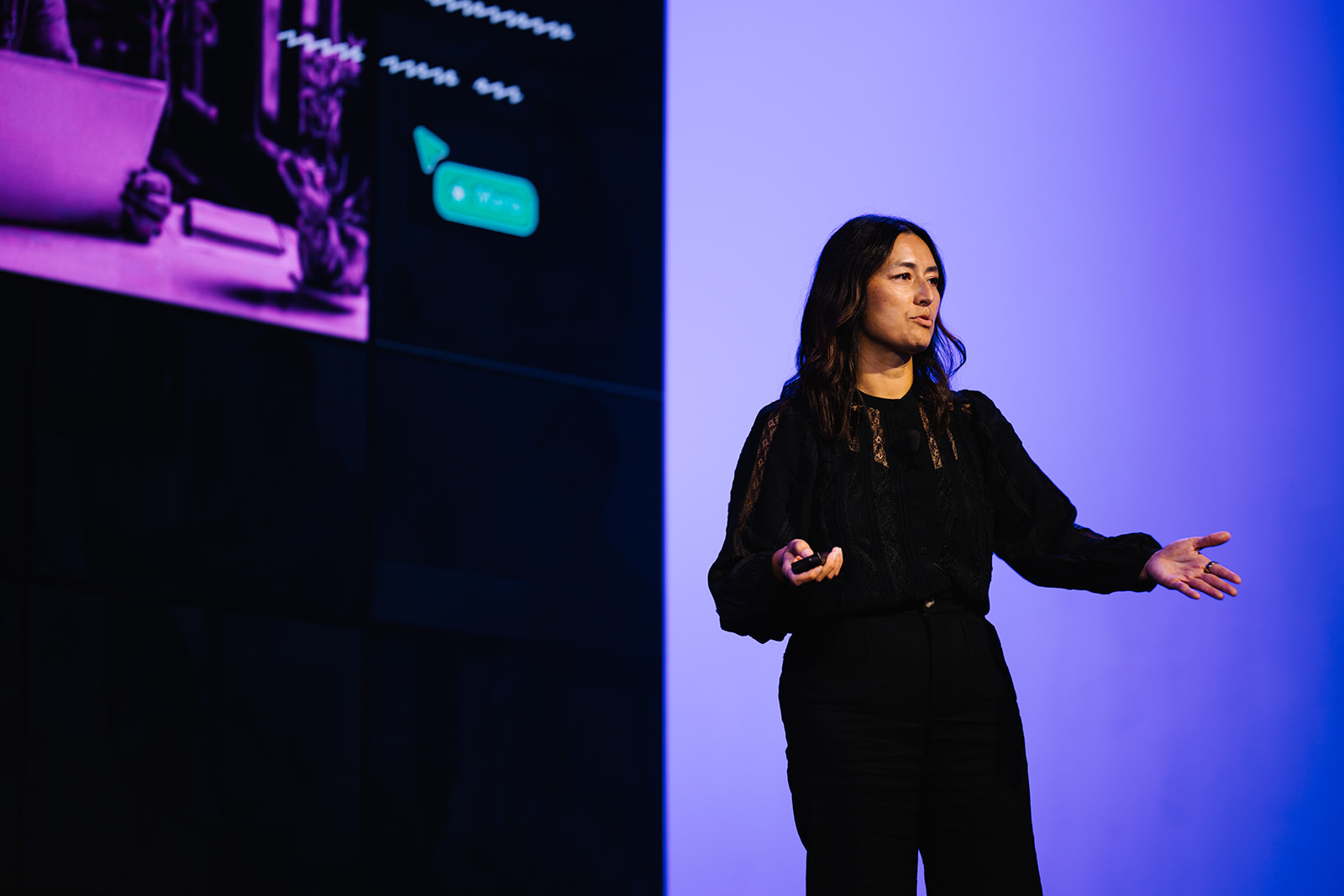By Dustin Stiver, Director of Design, LUMA and Amber Rutgers, AVP, Client Solutions, Mural
We were thrilled to be asked to speak at the Mural Customer Symposium last month not just because we relish any chance to engage with our customers, but because this particular opportunity came at such a unique moment in time.
Teams, workplaces, and the world itself are evolving so rapidly as we embrace the AI era. And we’re all grappling with the same question: How exactly do we use these remarkable new tools to actually make things better?
For us, that question is personal. Over the past decade and a half, the LUMA System has helped people in every kind of role, in every kind of organization, tackle challenges with creativity, empathy, and purpose. And today as part of Mural, we’re exploring an urgent new question: How do we apply human-centered design methods in the AI era?
The short answer? We don’t start from scratch. We take the proven principles of human-centered design, infuse them with AI when appropriate, and place increased emphasis on driving alignment and outcomes with the LUMA System.
New skills for a new era: Learning to use the AI tools we have
It’s easy to assume that because AI is just a click away in most of the platforms we use today, we should already know how to apply it effectively and feel that we can trust it confidently.
But the truth is, AI only works as well as you know how to use it. Too many teams still find themselves struggling with adoption, missing targets, and realizing they’re not using these tools to their fullest potential. AI might be “here,” but we still have plenty of room to grow in terms of how we integrate it successfully into our teams and workflows.
In other words, the tools are available, but the methodology to use them effectively — in a way that truly accelerates innovation and collaboration — is still missing for most organizations.
That’s where human-centered design comes in.
Back to the beginning: Why LUMA’s foundation is more important than ever in a time of change
One of the most transformational ideas at the heart of the LUMA System is that everyone designs. Nobel Laureate in Economics Herb Simon once put it this way: Any time you’re moving from the existing situation to a preferred situation, you’re doing design. That means if you’re trying to make something better — a product, a process, a service, a culture, a community — you’re already acting like a designer.
At LUMA, we distill human-centered design into three core skills:
- Looking: observing what’s going on around you
- Understanding: analyzing that information to uncover opportunities
- Making: envisioning and creating the future
Under those skills sit 36 methods that we've been refining and teaching for 15 years to teams from every industry all over the world. These methods form a common language for innovation that enables organizations to tackle any challenge, from problem framing and prioritizing to brainstorming and prototyping.
These methods are more vital than ever in our new era of AI-powered work. Today, teams accelerate research with AI-assisted synthesis, utilize large language models to generate hundreds of options in minutes, prioritize sales opportunities with the help of AI agents, and more. But for these workflows to result in positive outcomes for your organization, AI must be human-centered — and the LUMA System is the key to helping your team adapt to this new era of technology.
Changing the culture: Human-centered AI starts with human-centered design
A few years ago, Mural acquired LUMA to embed a professional services and human-centered design practice into our visual collaboration platform. That gave us the chance to not only upskill thousands of workers and elevate the importance of design skills across organizations, but to deliver these skills in a digital space where people are already working.
Consider the example of HPE, which used LUMA to achieve their culture transformation goals. We helped them close the “learning-doing gap” by embedding new methods into daily work and giving people the resources and technology to use them back at their desks.
When you do that, people start working differently. Teams develop new habits. That’s how real culture change happens — and it’s culture change that makes transformation stick.
Today, a lot of transformation goals sound like “digital transformation” or “AI-first.” We believe that focusing on AI in a vacuum is a mistake. AI adoption still requires the right culture for it to succeed — and adding AI to a dysfunctional team only amplifies the dysfunction.
We believe LUMA’s approach is the key to making AI transformation successful. And it should be your competitive advantage in the age of AI adoption.
AI in action: Finding rapid alignment in a live group setting
One of our favorite moments from our session was when we put this principle into practice during a live Rose/Thorn/Bud activity. Picture a room full of new faces. In minutes, they were surfacing what was working well (roses), what was challenging (thorns), and what had potential (buds) on their own teams, at their own organizations.
The twist? We had AI in the loop to instantly analyze and summarize key themes right there in front of the audience. Even more importantly, it created alignment in the room. People could literally see, in real time, that others shared their perspective, or that their responses connected in meaningful ways.
That’s the power Mural and LUMA provide: supercharged processes that reach outcomes faster than ever and accelerated transformation from a room of individuals to a fully aligned team.
Putting the A in LUMA: The catalyst for progress
Since the beginning, LUMA has helped teams solve problems and achieve results with three core skills: Looking, Understanding, and Making. Now, we’re adding a new element to the LUMA System: Aligning.
Why Aligning? In a time of rapid change and AI‑driven transformation, alignment turns chaos into clarity. It connects ideas, people, and actions so teams can move forward together and deliver better outcomes faster. Our approach to alignment is rooted in Human-Centered AI — combining human creativity, empathy, and collaboration with the speed and efficiency of AI.
In over a decade of helping organizations innovate, we’ve seen it time and again: misalignment derails progress. You can have the right insights, the right ideas, and even the right technology, but if your team isn’t aligned, you’re not going to deliver the outcomes you desire.
So the “A” in LUMA stands for Aligning — not just at the start of projects, but as an ongoing practice. Our new focus on alignment complements the power of LUMA's core design skills (Looking, Understanding and Making), and emphasizes the importance of aligning as the fundamental action that drives progress and propels companies forward.
To support our new focus on alignment, we’re kicking off a design partner program to help shape the future of the LUMA System. It’s a chance to work directly with clients and to explore the future of human-centered AI.
AI opens doors we couldn’t walk through before, and LUMA ensures we walk through them together, toward better outcomes that truly Make Things Better.
If your team is ready to combine the best of human ingenuity with the emerging power of AI, and to do it in a way that keeps everyone moving forward together, we’d love to talk.



.webp)








